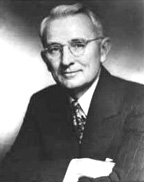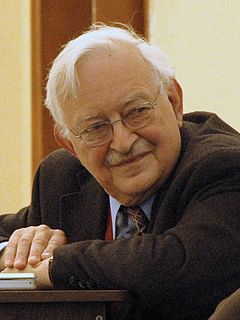Ein Zitat von Amartya Sen
Kaum eine Hungersnot betrifft mehr als 5 Prozent, fast nie mehr als 10 Prozent der Bevölkerung. Der größte Anteil der Bevölkerung war von der Hungersnot in Irland in den 1840er Jahren betroffen, die über mehrere Jahre hinweg fast 10 Prozent ausmachte.
Verwandte Zitate
Im US-Bundesstaat Washington ist die Einwandererbevölkerung in den fünf Jahren zwischen 2000 und 2005 um 42 Prozent gewachsen – was einem Anstieg von 8 Prozent auf 10,6 Prozent der Gesamtbevölkerung entspricht – und die Arbeitslosenquote im Bundesstaat hat den niedrigsten Stand seit sechs Jahren erreicht.
Überall in Amerika brechen Wälder aus. Neuengland hat seit dem Bürgerkrieg mehr Wälder. Im Jahr 1880 war der Staat New York nur zu 25 Prozent bewaldet. Heute sind es mehr als 66 Prozent. Im Jahr 1850 war Vermont nur zu 35 Prozent bewaldet. Mittlerweile ist es zu 76 Prozent bewaldet, Tendenz steigend. Im Süden ist mehr Land mit Wald bedeckt als jemals zuvor im letzten Jahrhundert. Im Jahr 1936 ergab eine Studie, dass 80 Prozent des piemontesischen Georgia ohne Bäume waren. Heute sind fast 70 Prozent des Staates bewaldet. Allein im letzten Jahrzehnt hat Amerika mehr als 10 Millionen Hektar Waldfläche hinzugefügt.
Wirklich interessant ist nicht nur das Ausmaß der jüngsten Einwanderung in dieses Land, sondern auch ihre Verteilung und ihre Investitionen im Land. Etwa 9,3 Prozent der Bevölkerung sind mittlerweile im Ausland geboren [einige Tage später gab das Census Bureau einen Anteil von über 10 Prozent an]. Was wirklich überraschend ist, ist, wie gut diese Bevölkerungsgruppen verteilt sind. Historisch gesehen sehen wir neue Einwanderer hauptsächlich an der Küste und in einigen großen Städten. Ich denke, die Daten werden eine viel breitere Verteilung der neuen Bevölkerungsgruppen zeigen, als wir es in der Vergangenheit erlebt haben.
Der zweite Grund, warum wir die wachsende Kluft nicht beobachtet haben, ist, dass sich unsere historischen und sozialwissenschaftlichen Analysen auf das konzentriert haben, was innerhalb der „Mittelschicht“ passiert ist – also bei den zehn bis fünfzehn Prozent der Weltbevölkerung. Wirtschaft, die mehr Überschüsse verbrauchte, als sie selbst produzierte. Innerhalb dieses Sektors hat es tatsächlich eine relativ dramatische Abflachung der Kurve zwischen der obersten Spitze (weniger als ein Prozent der Gesamtbevölkerung) und den wirklich „mittleren“ Segmenten oder Kadern (der Rest der zehn bis fünfzehn Prozent) gegeben.
Die meisten Menschen sind überrascht, wenn sie meine düsteren Zahlen hören: Wir kennen 2 Millionen Arten von Pflanzen, Tieren und Mikroorganismen und können ihnen jeweils einen wissenschaftlichen Namen und eine diagnostische Beschreibung geben. Wir kennen, vielleicht großzügigerweise, mehr als nur ein kleines bisschen der Anatomie in nicht mehr als 10 Prozent. Wir haben bei weniger als einem Zehntel von einem Prozent gründliche Studien durchgeführt. Und die Gesamtzahl der Arten auf der Erde ist bis auf die nächste Größenordnung unbekannt.









































